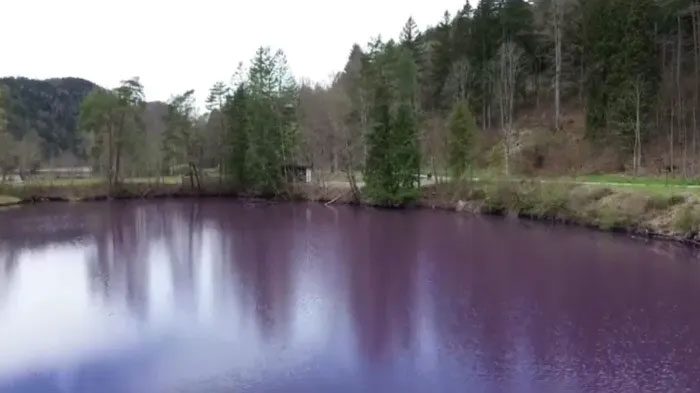Located in the majestic Alps, the limestone quarry lake near the city of Füssen in Bavaria, Germany, has become a popular tourist destination due to its stunning natural scenery. Recently, the lake’s water has unexpectedly turned a vibrant purple, captivating visitors more than ever.

Limestone quarry lake near Füssen, Bavaria, Germany

The lake water has turned an unusual purple.
Authorities explain that the change in the lake’s color is due to the presence of purple sulfur bacteria (PSB) in the water. These bacteria thrive in oxygen-depleted, anaerobic environments such as ponds and lakes, particularly during the summer months.
Currently, visitors can still approach the lake for sightseeing, as these bacteria are only dangerous in enclosed spaces. The purple sulfur bacteria will eventually settle at the bottom of the lake. Similar phenomena occurred in 2020 and 2021, causing the lake’s water to turn purple.
The limestone quarry lake is an artificial lake created during mining operations. During the mining process, the lake remains dry. Once mining ceases, groundwater and rainwater accumulate to form the lake. The depth of the lake depends on the rainfall in the area. The quarry lake is also known as a sinkhole lake. Although the water in the quarry lake is very clear, it poses significant dangers to humans due to the large amounts of dissolved minerals left behind from mining, such as lime, asbestos, granite dust, and heavy metals.




















































